Andrea Lacava
LibIQ: Toward Real-Time Spectrum Classification in O-RAN dApps
May 15, 2025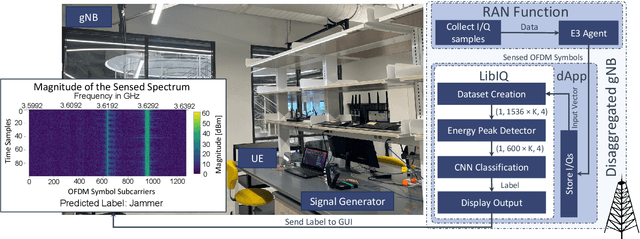
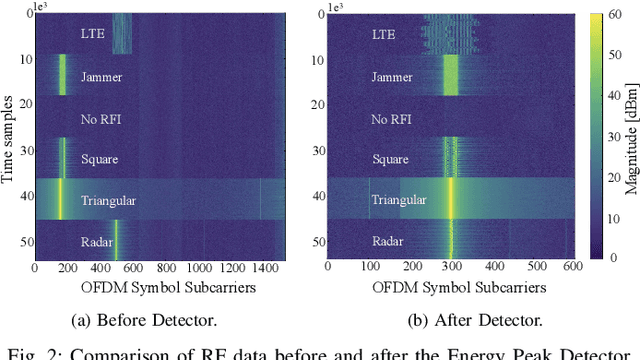
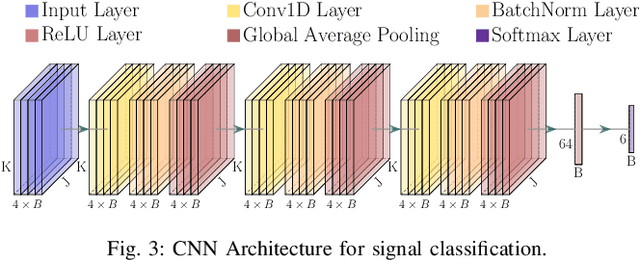
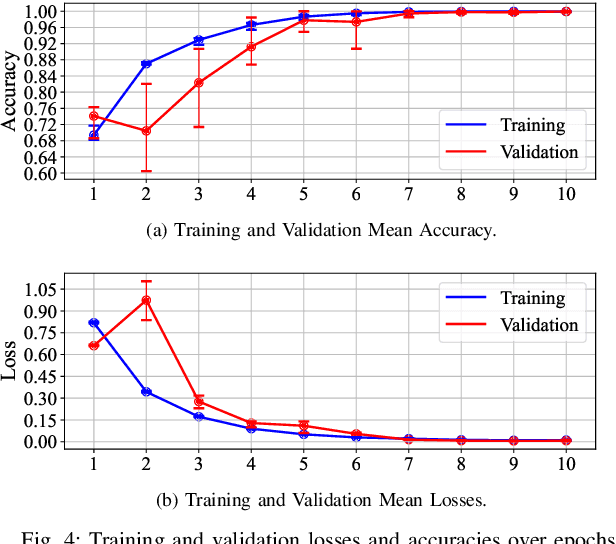
Abstract:The O-RAN architecture is transforming cellular networks by adopting RAN softwarization and disaggregation concepts to enable data-driven monitoring and control of the network. Such management is enabled by RICs, which facilitate near-real-time and non-real-time network control through xApps and rApps. However, they face limitations, including latency overhead in data exchange between the RAN and RIC, restricting real-time monitoring, and the inability to access user plain data due to privacy and security constraints, hindering use cases like beamforming and spectrum classification. In this paper, we leverage the dApps concept to enable real-time RF spectrum classification with LibIQ, a novel library for RF signals that facilitates efficient spectrum monitoring and signal classification by providing functionalities to read I/Q samples as time-series, create datasets and visualize time-series data through plots and spectrograms. Thanks to LibIQ, I/Q samples can be efficiently processed to detect external RF signals, which are subsequently classified using a CNN inside the library. To achieve accurate spectrum analysis, we created an extensive dataset of time-series-based I/Q samples, representing distinct signal types captured using a custom dApp running on a 5G deployment over the Colosseum network emulator and an OTA testbed. We evaluate our model by deploying LibIQ in heterogeneous scenarios with varying center frequencies, time windows, and external RF signals. In real-time analysis, the model classifies the processed I/Q samples, achieving an average accuracy of approximately 97.8\% in identifying signal types across all scenarios. We pledge to release both LibIQ and the dataset created as a publicly available framework upon acceptance.
Listen-While-Talking: Toward dApp-based Real-Time Spectrum Sharing in O-RAN
Jul 06, 2024Abstract:This demo paper presents a dApp-based real-time spectrum sharing scenario where a 5th generation (5G) base station implementing the NR stack adapts its transmission and reception strategies based on the incumbent priority users in the Citizen Broadband Radio Service (CBRS) band. The dApp is responsible for obtaining relevant measurements from the Next Generation Node Base (gNB), running the spectrum sensing inference, and configuring the gNB with a control action upon detecting the primary incumbent user transmissions. This approach is built on dApps, which extend the O-RAN framework to the real-time and user plane domains. Thus, it avoids the need of dedicated Spectrum Access Systems (SASs) in the CBRS band. The demonstration setup is based on the open-source 5G OpenAirInterface (OAI) framework, where we have implemented a dApp interfaced with a gNB and communicating with a Commercial Off-the-Shelf (COTS) User Equipment (UE) in an over-the-air wireless environment. When an incumbent user has active transmission, the dApp will detect and inform the primary user presence to the gNB. The dApps will also enforce a control policy that adapts the scheduling and transmission policy of the Radio Access Network (RAN). This demo provides valuable insights into the potential of using dApp-based spectrum sensing with O-RAN architecture in next generation cellular networks.
Programmable and Customized Intelligence for Traffic Steering in 5G Networks Using Open RAN Architectures
Oct 06, 2022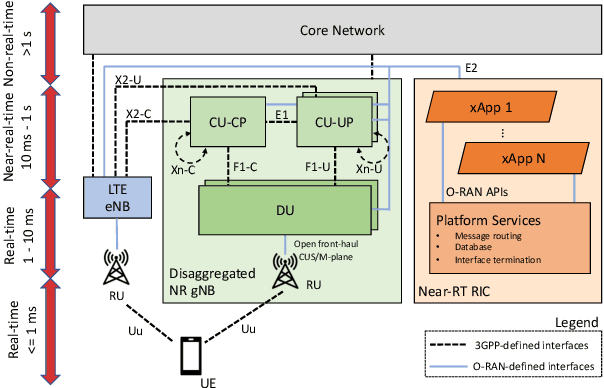
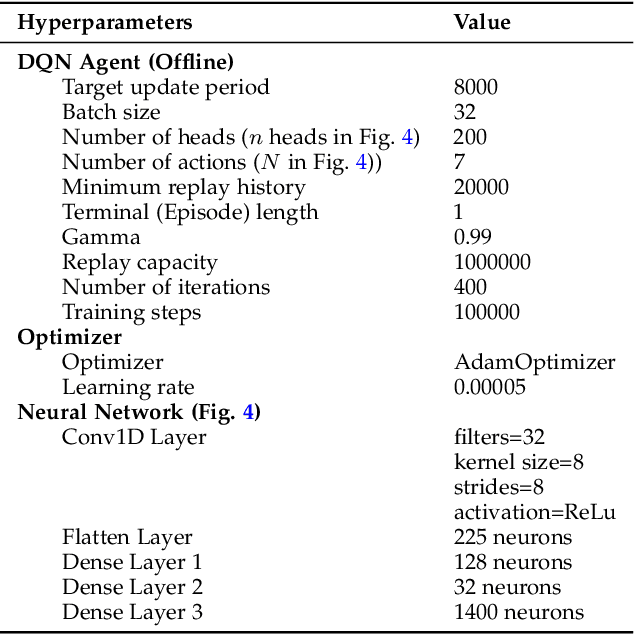
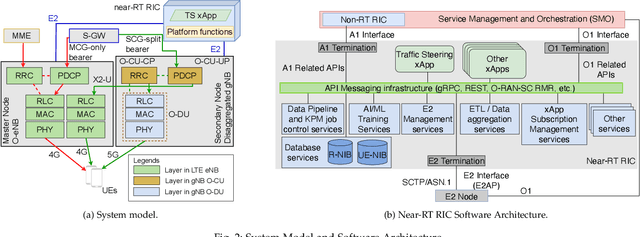
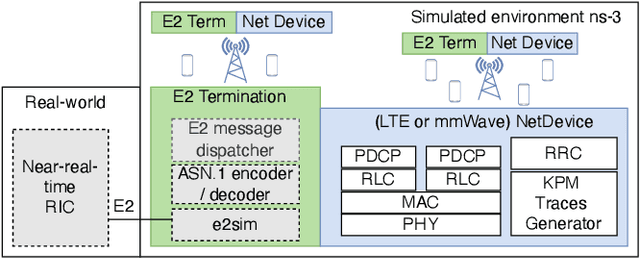
Abstract:5G and beyond mobile networks will support heterogeneous use cases at an unprecedented scale, thus demanding automated control and optimization of network functionalities customized to the needs of individual users. Such fine-grained control of the Radio Access Network (RAN) is not possible with the current cellular architecture. To fill this gap, the Open RAN paradigm and its specification introduce an open architecture with abstractions that enable closed-loop control and provide data-driven, and intelligent optimization of the RAN at the user level. This is obtained through custom RAN control applications (i.e., xApps) deployed on near-real-time RAN Intelligent Controller (near-RT RIC) at the edge of the network. Despite these premises, as of today the research community lacks a sandbox to build data-driven xApps, and create large-scale datasets for effective AI training. In this paper, we address this by introducing ns-O-RAN, a software framework that integrates a real-world, production-grade near-RT RIC with a 3GPP-based simulated environment on ns-3, enabling the development of xApps and automated large-scale data collection and testing of Deep Reinforcement Learning-driven control policies for the optimization at the user-level. In addition, we propose the first user-specific O-RAN Traffic Steering (TS) intelligent handover framework. It uses Random Ensemble Mixture, combined with a state-of-the-art Convolutional Neural Network architecture, to optimally assign a serving base station to each user in the network. Our TS xApp, trained with more than 40 million data points collected by ns-O-RAN, runs on the near-RT RIC and controls its base stations. We evaluate the performance on a large-scale deployment, showing that the xApp-based handover improves throughput and spectral efficiency by an average of 50% over traditional handover heuristics, with less mobility overhead.
 Add to Chrome
Add to Chrome Add to Firefox
Add to Firefox Add to Edge
Add to Edge